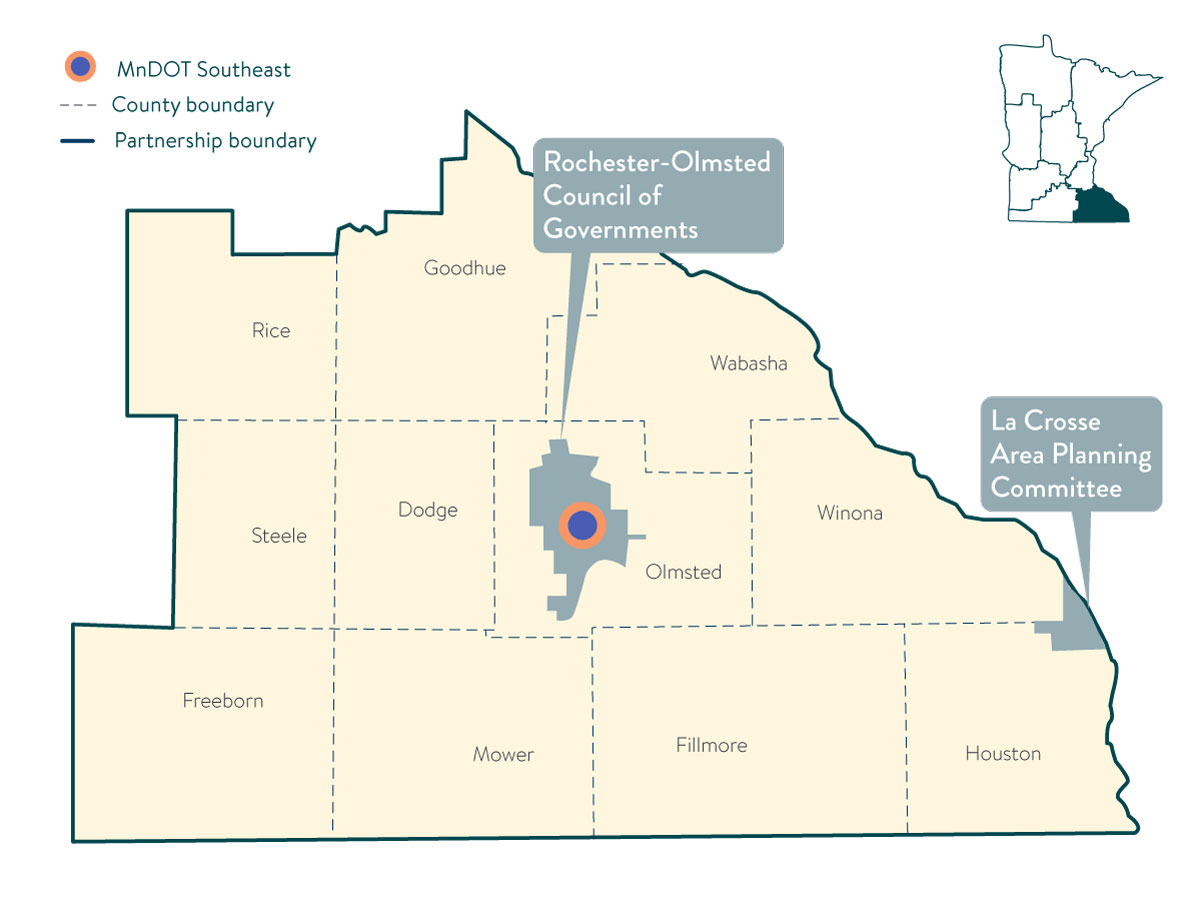Area Transportation Partnerships
Southeast Minnesota Area Transportation Partnership

Southeast Minnesota Area Transportation Partnership (ATP) covers 11 counties in Southeast Minnesota:
- Dodge
- Fillmore
- Freeborn
- Goodhue
- Houston
- Mower
- Olmsted
- Rice
- Steele
- Wabasha
- Winona
Get involved
Learn about our 2026-2029 STIP
Our regional priorities are outlined in Minnesota's State Transportation Improvement Program (STIP). The 2026-2029 STIP was approved by FHWA and FTA on Oct. 29, 2025.
Draft ATIP comment period is closed
The public review and comment on the Southeast Minnesota ATP Draft 2026-2029 Area Transportation Improvement Program (ATIP) closed at 4:30 p.m. on July 8, 2025.
Comment on STIP amendments and modifications
- View STIP formal amendments open for comment.
- View STIP administrative modifications open for comment.
Attend our next meeting
- 10 a.m. to noon, Jan. 9, 2026, in-person or virtual
- MnDOT District 6 Headquarters Building
2900 48th Street NW, Rochester, MN
- MnDOT District 6 Headquarters Building
- View meeting notes, agendas and documents.
How we operate
Solicitations
Solicitation periods for Transportation Alternatives (TA), Carbon Reduction Program (CRP), and Promoting Resilient Operations for Transformative, Efficient, and Cost-Saving Transportation (PROTECT) have the same timelines throughout the application process. All three programs are open now, and the remaining solicitation timeline is as follows:
- Friday, October 31, 2025 – Deadline for applicants to submit a letter of intent (LOI)
- Monday, November 3, 2025 – LOI review process by MPO/MnDOT Districts begins
- Wednesday, November 26, 2025 – Deadline for MPO/MnDOT Districts review of LOIs and recommendation to proceed with full application given to applicants
- Monday, December 1, 2025 – Official start of full application period
- Friday, January 9, 2026 – Deadline for applicants to submit full applications
- Monday, March 30, 2026 – Deadline for ATPs to select projects
